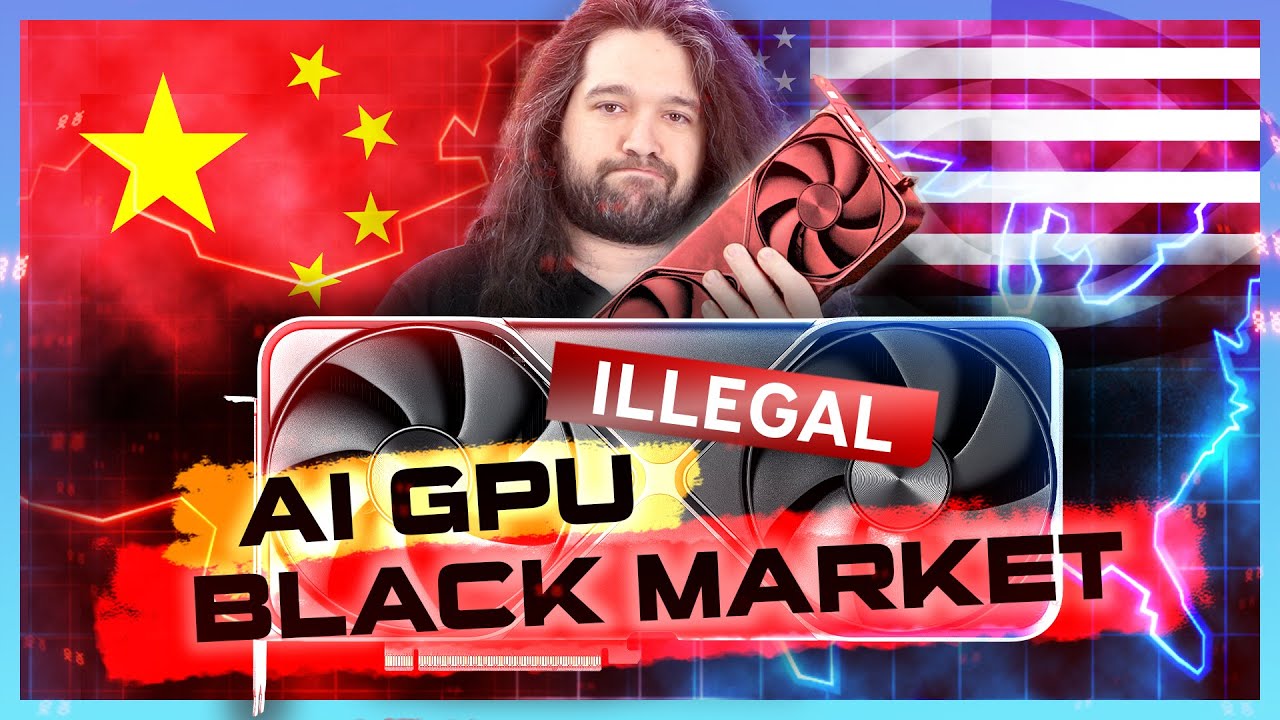The documentary The NVIDIA AI GPU Black Market, published by Gamers Nexus, has highlighted a problem that goes far beyond smuggling: the insecurity of the supply chain for critical hardware powering today’s artificial intelligence, HPC, and cloud computing projects.
Running for more than three and a half hours, the report details how U.S. export restrictions on China have fueled a booming black market for high-end NVIDIA GPUs. This phenomenon not only impacts Chinese governments and universities but also has practical consequences for system administrators, cloud architects, and IT teams worldwide.
GPUs: The New Backbone of Digital Infrastructure
The NVIDIA H100, A100, and RTX 4090 are not just graphics cards. They are now the foundation of AI clusters, accelerated virtualization environments, and scientific computing projects. Their scarcity in regulated markets is creating:
- Global shortages: Less official stock available for certified resellers, delaying hardware acquisition for IT projects.
- Price inflation: While an H100 costs around $30,000 through official channels, in the black market it can exceed $120,000.
- Compromised planning: AI training and inference cluster deployments are delayed due to hardware shortages, impacting delivery commitments.
Supply Chain Under Threat
The documentary shows cases of “tech mules” carrying GPUs in suitcases, modified servers hiding GPUs, and hubs like Hong Kong and Singapore acting as redistribution points for illicit hardware.
For system administrators, this presents two major risks:
- Uncertified hardware: GPUs acquired via gray markets compromise reliability, support, and warranties.
- Compliance issues: European or U.S. organizations that unknowingly purchase such hardware risk regulatory sanctions.
Modifications and Technical Limitations
China already circulates modified RTX 4090s with expanded VRAM for AI workloads, after the ban on the original version and the launch of the limited-capacity RTX 4090D. From a systems perspective:
- These GPUs may offer additional performance, but stability and compatibility with AI frameworks (PyTorch, TensorFlow, CUDA/cuDNN) is not guaranteed.
- Reliance on altered drivers or unofficial firmware introduces a security and maintenance vector into production clusters.
NVIDIA Between Politics and Business
While NVIDIA does not participate directly in the black market, its position is ambiguous.
- The company has released crippled versions like the A800, H800, and RTX 4090D to comply with export rules.
- At the same time, the artificial scarcity helps maintain unprecedented demand and perceived value of its chips.
Additionally, as the Financial Times revealed, NVIDIA agreed to hand over 15% of its China revenues to the U.S. government, setting a precedent that shows just how much geopolitics is now intertwined with IT supply chains.
Official vs. Black Market GPU Prices
| GPU | Official price (approx.) | Black market price in China | Multiplier |
|---|---|---|---|
| NVIDIA H100 | $30,000 | $90,000 – $120,000 | x3 – x4 |
| NVIDIA A100 | $20,000 | $60,000 – $80,000 | x3 |
| RTX 4090 | $1,599 (MSRP) | $3,500 – $4,000 | x2 – x2.5 |
What This Means for System Administrators
For professionals managing critical infrastructure, this scenario brings several takeaways:
- Realistic planning: AI and HPC projects must assume longer lead times for GPU acquisition.
- Alternative technologies: Consider AMD Instinct, Intel Gaudi, or hybrid CPU/GPU clusters as temporary solutions.
- Compliance focus: Ensure all hardware comes from auditable, official channels.
- Strategic risk: GPU access is no longer just a budget issue—it’s about geopolitics and operational continuity.
FAQ – What Sysadmin Teams Are Asking
1. Can European companies be affected by the black market?
Yes. Buying from unauthorized intermediaries risks sanctions and comes without official support.
2. What are the real alternatives to NVIDIA GPUs?
AMD (Instinct MI300) and Intel (Gaudi 3) are advancing, but their software ecosystems still lag behind CUDA.
3. Is it viable to use gaming GPUs (like the RTX 4090) in production AI?
They can be useful for prototyping or inference but are not recommended for mission-critical environments due to power, cooling, and support limitations.
4. Does the black market impact availability in Europe?
Yes. A portion of global stock is diverted to China at inflated prices, reducing official channel supply.
5. What does this mean for cloud availability?
Hyperscalers prioritize their own data centers, leaving less GPU capacity available for public cloud customers, especially SMEs and universities.
6. Will Chinese-made chips catch up?
China is accelerating development of alternatives (Huawei Ascend, Biren BR100), but they still lag in performance and global software compatibility.
👉 The full documentary (The NVIDIA AI GPU Black Market) is available on Gamers Nexus’ official YouTube channel.
Source: Revista Cloud


